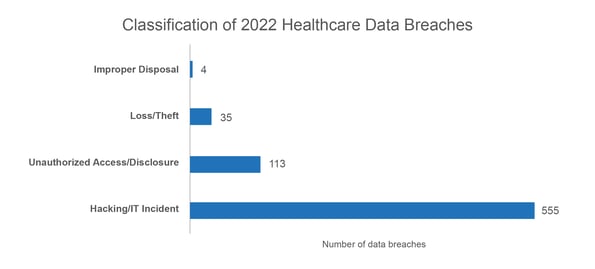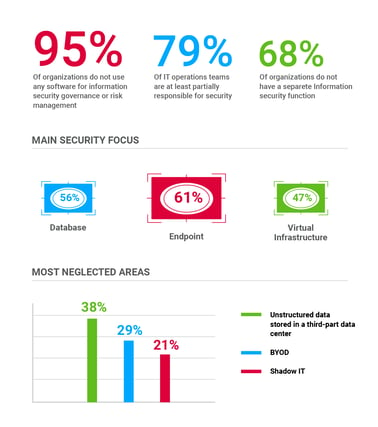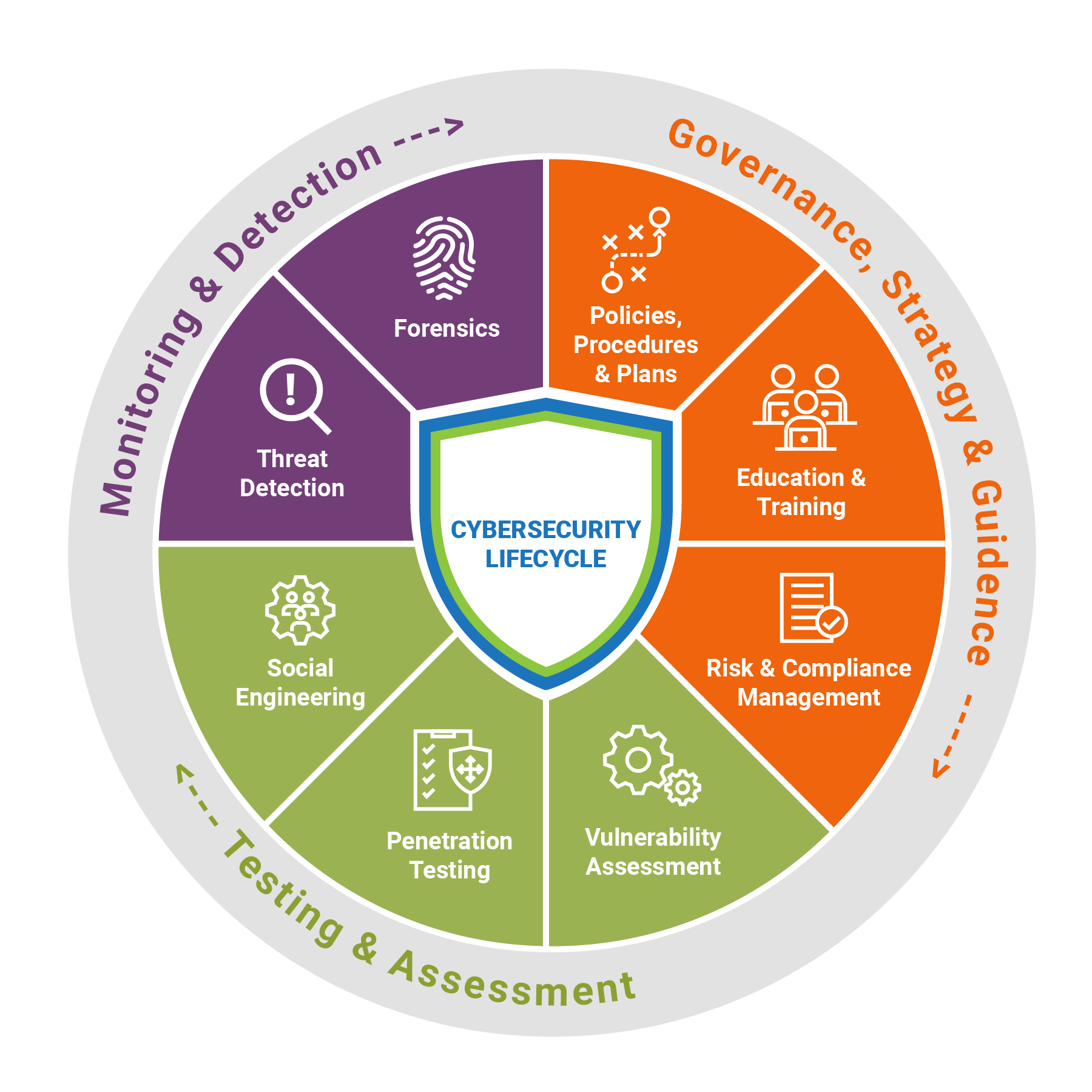Insights
- As the digital landscape evolves, Radiology operations encounter increasing challenges in balancing prompt patient access to diagnostic imaging and protecting sensitive healthcare data.
- Given the substantial expenses associated with data breaches in radiology operations, investing in cybersecurity infrastructure and prioritizing cyber resilience is imperative. This approach allows for the identification of vulnerabilities and the mitigation of emerging threats.
- To enhance efficiency, productivity and uphold exceptional quality and accuracy, radiology departments must adopt advanced security technologies, conduct regular security and penetration assessments, and provide training programs for radiologists. These measures enable continuous improvement in operations.
Radiology operations play a vital role in modern healthcare systems by providing a crucial foundation for precise identification and improved treatment through imaging informatics. However, they face mounting challenges in ensuring swift patient access to diagnostic imaging while safeguarding highly sensitive healthcare data in the evolving digital landscape. Recent years have witnessed a surge in cyber-attacks targeting radiology operations. A report indicates that healthcare organizations worldwide encountered an average of 1,463 cyber-attacks per week in 2022, a 74% increase compared to the previous year. Radiology departments have become one of the primary targets of these attacks. Such cybersecurity breaches compromise the integrity of sensitive patient data and disrupt critical clinical workflows. Consequently, they contribute to adverse patient outcomes, misdiagnoses, and delays in receiving necessary treatments.
As the cyber threat landscape continues to evolve, Radiology faces an increasingly complex array of threats from cyberattacks. By implementing robust cybersecurity protocols and training staff on best practices for information security, radiology teams can ensure that patients receive accurate diagnoses and effective treatments without compromising privacy or safety.
The Rising Concerns
Radiology operations manage a vast volume of sensitive information, encompassing medical histories, diagnosis reports, and images that necessitate secure storage and transmission. However, the evolving cyber threat landscape presents an ongoing challenge, as criminal syndicates and hackers continuously develop new methods to breach data security systems and gain unauthorized access to this valuable information. The repercussions of a data breach can be severe, involving legal repercussions, public scrutiny, and disruptions in clinical care. These mounting challenges can be overwhelming for healthcare professionals who are entrusted with the responsibility of safeguarding healthcare data.
Recent news reports have underscored the increasing frequency and potential impact of cyberattacks. For instance, a radiology firm disclosed a data breach to Montana's Attorney General on September 2, while another firm in New Mexico notified its patients of a data breach on October 12.

Additionally, per the Verizon 2022 Data Breach Investigations report findings, the healthcare sector emerged as the primary target for hacking attacks and ransomware campaigns. The report identified 849 data breach incidents within the healthcare industry, with 571 confirmed as instances of data disclosure. Furthermore, another statistic indicates that over 90% of healthcare organizations have encountered at least one data breach in the past two years alone. These alarming statistics emphasize the pressing requirement for proactive measures to safeguard radiology operations, protect sensitive patient information, and prevent unauthorized access or misuse.
Several radiology departments lack sufficient resources and expertise to handle cybersecurity threats, leading to inconsistent implementation of cybersecurity measures across the organization.
In addition to the escalating cybersecurity challenges, Radiology departments encounter a substantial surge in data volumes resulting from advanced imaging technologies. For example, three-dimensional mammography images are 20 times larger than their two-dimensional counterparts. This places significant strain on the resources available to radiology operations. Furthermore, the necessity for radiology departments to share data through portals, hubs, and mobile devices exposes patient data to heightened risks of data breaches.


Several radiology departments lack sufficient resources and expertise to handle cybersecurity threats, leading to inconsistent implementation of cybersecurity measures across the organization.
The Importance of Cybersecurity Resilience
There has been a notable shift, like cyber-attacks targeting radiology departments, with employees no longer being the primary culprits. The Verizon 2022 Data Breach Investigations Report states, "With the rise of the Basic Web Application Attacks pattern in this vertical, those inside actors no longer hold sway. Move over, insiders; the big dogs are here." This indicates a change in the threat landscape, necessitating that radiology departments adapt their security measures to protect patient data from cyber-attacks.
In light of this evolving scenario, cybersecurity resilience becomes crucial for radiology departments to safeguard patient data against such attacks. A recent report by Cisco Security Outcomes reveals that security resilience is considered a top priority by 96% of executives across various industries, emphasizing the importance of addressing cybersecurity risks and implementing robust measures within radiology departments.
The complexity of medical imaging technology and integrating medical devices with various IT systems make radiology departments more susceptible to cyber threats.
Article
Humanizing Healthcare | Learn about building an accessible consumer-centric ecosystem.
Best Practices

The high cost of data breaches in radiology operations makes it essential to invest in cybersecurity infrastructure and prioritize regular assessments to identify vulnerabilities and mitigate threats.
Given the evolving challenges, several radiology operations adopt a passive "wait-and-see" approach. However, it is crucial to recognize that this approach does not effectively protect patient data or proactively prevent future security breaches. Fortunately, there are practical measures that all leaders can implement to fortify their defenses and ensure the safety of radiology operations. These steps encompass the following:
Phishing remains the primary technique used by cybercriminals to carry out ransomware attacks. Nevertheless, adopting comprehensive training and awareness programs within radiology departments can significantly reduce the impact of such attacks. Educating employees, colleagues, and leadership about the importance of strong passwords, the risks associated with phishing attacks, and other cybersecurity vulnerabilities makes establishing secure radiology operations feasible.
IT departments are responsible for creating interoperability resources and APIs to facilitate modern healthcare systems. However, it is crucial to recognize that these resources and programs can unintentionally introduce vulnerabilities that hackers can exploit. Therefore, radiology departments must ensure that these resources and APIs comply with the latest security regulations and requirements. To achieve this, it is recommended to regularly audit legacy IT systems, provide comprehensive staff training, and consistently update security policies and procedures. By doing so, radiology departments can uphold compliance with regulatory standards and enhance their overall cybersecurity posture.
By utilizing cloud solutions, medical data can be stored in an encrypted format, fortified with multiple layers of protection, significantly increasing the difficulty for cybercriminals to infiltrate and compromise the data. Moreover, cloud-based solutions typically incorporate enterprise-grade security measures, real-time monitoring capabilities, and scalable storage capacity, enabling healthcare organizations to effectively address the growing demands for data storage while maintaining robust security protocols.
Patient consent plays a crucial role in protecting patient data privacy. Radiology departments are responsible for ensuring that patients are well-informed about how their data is utilized, what specific information is collected, and who has authorized access to it. Patient consent must be obtained for any use of their data, including sharing it with third-party vendors. By prioritizing patient consent, radiology departments can uphold patient privacy and maintain ethical practices regarding data handling.
Radiology departments rely on third-party vendors, such as cloud vendors, value-added service providers, and managed service providers, for their IT services. It is paramount to vet these vendors and comprehensively assess their cybersecurity posture. This entails reviewing their security protocols, evaluating their credentials, and assessing their compliance standards. For instance, cloud vendors should have passed a HIPAA audit and obtained HITRUST certification. By diligently evaluating and selecting vendors with strong cybersecurity measures and appropriate certifications, radiology departments can enhance the security and integrity of their IT systems and ensure compliance with relevant regulations and standards.
The zero-trust architecture approach adopts a perspective where every user or device seeking access to the system is considered potentially malicious until they can authenticate and establish trust. By implementing this approach, organizations can mitigate security risks and better protect their systems and data. Employing best-in-class encryption mechanisms also ensures that data is safeguarded during transit and at rest. This encryption provides an added layer of protection against potential breaches or cyber-attacks, enhancing overall security measures.
Performing regular security assessments and conducting penetration testing are vital steps to identify vulnerabilities and weaknesses in the security posture of radiology operations. Organizations can ensure their radiology operations are as secure by engaging a reputable third-party security firm to conduct cybersecurity, penetration, and compliance testing. These assessments and tests provide valuable insights into the effectiveness of existing security measures and help uncover potential areas for improvement.
Regularly reviewing and updating policies and procedures, conducting security assessments, and providing up-to-date training on threats and prevention techniques are essential for radiology departments. Cultivating a cybersecurity-aware culture and fostering an environment where employees feel empowered to report suspicious activity is also important.
Conclusion
Amid the ever-changing threat landscape, no foolproof solution can completely protect radiology operations from cyberattacks. Nevertheless, by fostering informed awareness and taking proactive measures, radiologists and department leaders can substantially heighten the difficulty level for malicious actors. As the healthcare industry continues to evolve, it becomes imperative for radiology operations to maintain vigilance in securing their systems against cyber threats, thereby safeguarding the confidentiality, integrity, and security of patient data.
By adopting new security technologies, conducting regular vulnerability assessments, and providing training and education programs for radiologists, radiology departments can improve efficiency and productivity while maintaining high levels of quality and accuracy.
Source
- https://blog.checkpoint.com/2023/01/05/38-increase-in-2022-global-cyberattacks/
- https://www.verizon.com/business/en-gb/resources/2022-data-breach-investigations-report-dbir.pdf
- https://www.hipaajournal.com/healthcare-data-breach-statistics/
- https://www.verizon.com/business/en-gb/resources/2022-data-breach-investigations-report-dbir.pdf
- https://newsroom.cisco.com/c/r/newsroom/en/us/a/y2022/m12/cybersecurity-resilience-emerges-as-top-priority-as-62-percent-of-companies-say-security-incidents-impacted-business-operations.html






.png?width=1920&height=1080&name=Consulting2_Menu_1%20(1).png)




























































.webp?width=400&height=400&name=The%20future%20of%20Healthcare%20(1).webp)





















.png?width=400&height=400&name=7-Jun-13-2025-02-27-19-6568-PM%20(1).png)






